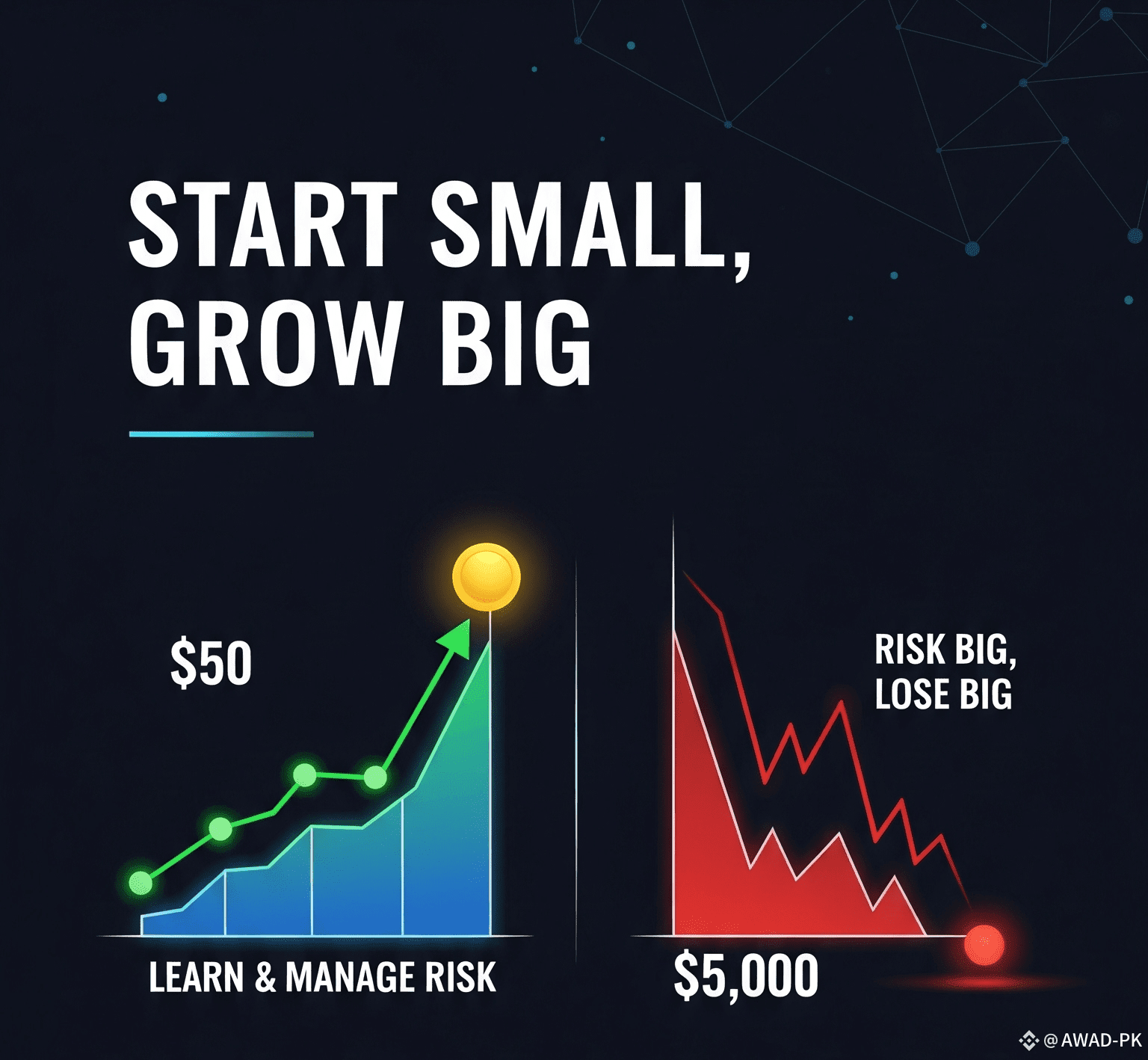When most beginners step into crypto, they think: If I start big, I’ll earn big.
It sounds logical, but in reality, starting with $5,000 instead of $50 is one of the fastest ways to lose money. Trading is not just about capital. It’s about skill, psychology, and risk management. Without those, a bigger account doesn’t protect you—it just magnifies your mistakes.
---
The Risk of Starting Too Big
Emotions Run Wild
Losing $20 on a $50 account is uncomfortable. Losing $2,000 on a $5,000 account can cause panic, stress, and sleepless nights.
No Room for Mistakes
Beginners always make mistakes—late entries, skipped stop-losses, panic selling. With $50, the lesson is cheap. With $5,000, the same mistake hurts badly.
Overconfidence
A few lucky wins on big capital can trick you into thinking you’ve mastered trading. That false confidence often leads to even bigger losses later.
Quitting Too Early
Many new traders quit after blowing up a large account. A small start keeps losses manageable and motivation intact.
---
Why $50 Is Enough for Beginners
1. Learn the Platform – With $50 you can try out Binance features: spot trades, DCA, small futures, stop-losses—without risking your savings.
2. Focus on Skills, Not Profits – The goal isn’t quick money, it’s learning entries, exits, charts, and discipline.
3. Cheap Tuition – Consider $50 the cost of a course. You’re paying to learn from mistakes without burning thousands.
4. Risk Control Training – Small capital forces you to respect risk. If you can protect $50, you’ll later protect $5,000.
5. Emotional Discipline – Losing $10 is manageable. Losing $1,000 can destroy confidence.
---
A Simple Scenario
Beginner A starts with $5,000. After two weeks, they lose 20% ($1,000). Panic sets in. They quit.
Beginner B starts with $50. After two weeks, they lose 20% ($10). Instead of panic, they analyze mistakes, adjust, and keep learning.
Who has the better future? The one who paid a $10 lesson fee instead of $1,000.
---
The Smart Path for New Traders
1. Start with $50–$100 only.
2. Practice spot trading before using leverage.
3. Risk only 1–2% per trade.
4. Build discipline and consistency first.
5. Scale up slowly—grow $50 → $100 → $200 before adding bigger capital.
---
Conclusion
Trading is not a sprint. It’s a long game of discipline and survival. Starting small with $50 gives you space to learn, make mistakes, and build skills—without destroying your savings. Once you develop confidence and consistency, scaling up will be natural and safer.
Remember: Your first goal in trading is not to make money. It’s to avoid losing it.
